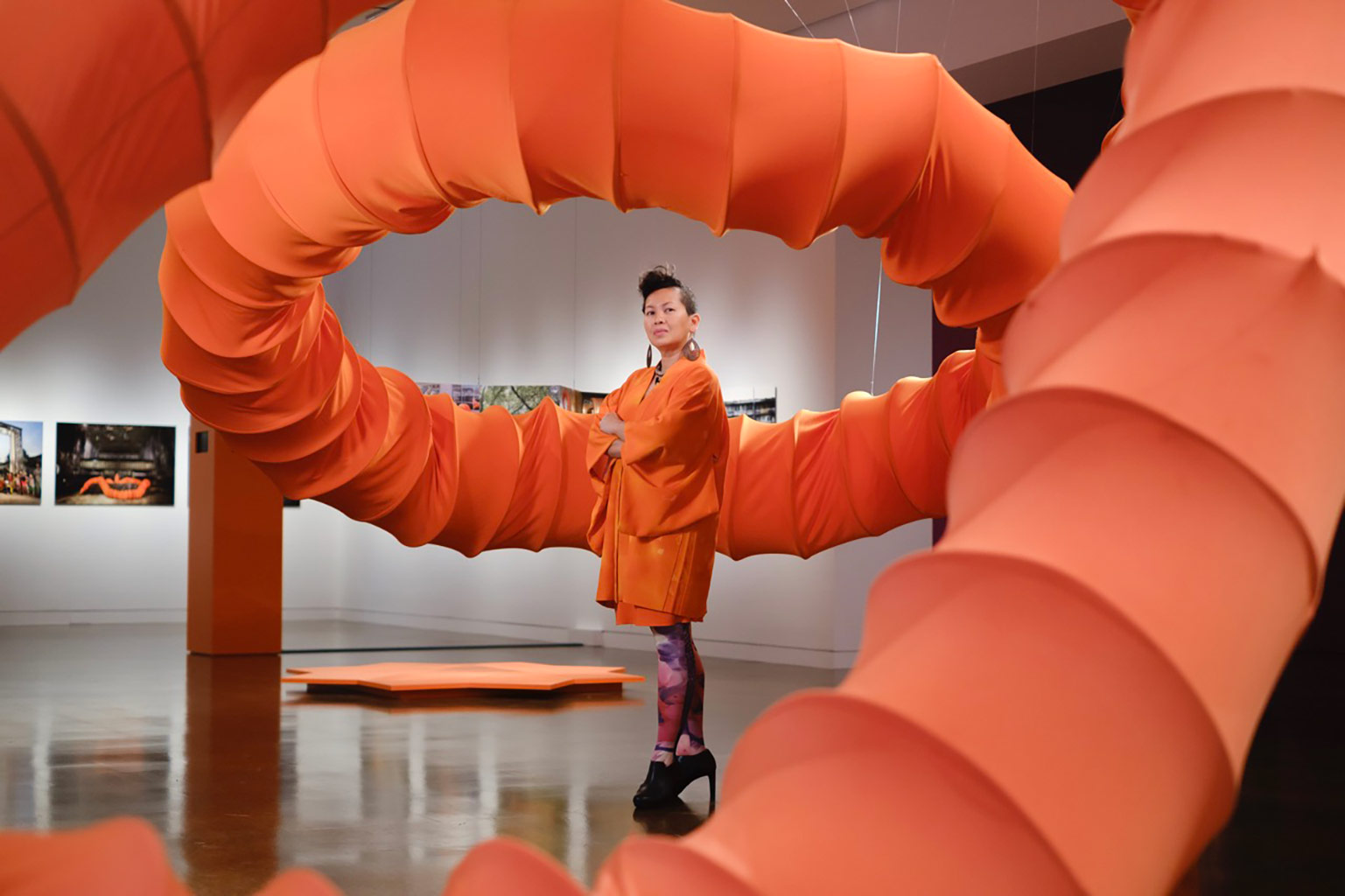
Anida Yoeu Ali portrait (Photo by Alborz Kamalizad)
The Buddhist Bug
A remarkable aspect of the exhibit is how Ali utilizes the space, displaying the life-size sculpture of The Buddhist Bug all over throughout SAAM’s hallways, letting it roam free and wild – before it ever even reaches the exhibition space.
“I felt like the bug is trying to figure out how to meander and wind its way through to the main exhibition,” Ali explains, of the soft fabric sculpture, which originally began at 20 meters but now totals around 100 meters. “When you’re sculpting this thing, you have to look at it from all these different angles, to see how it’s looking from different vantage points.”
Once inside the exhibition space, photographs and videos of Ali donning the costume are presented, showcasing all the grand destinations that The Buddhist Bug has traveled to on its journey thus far. Stops have included Chicago, Singapore, Taiwan, France, Cambodia, and more. In each photograph, The Buddhist Bug can be seen in a highly-orchestrated scene, alongside local community members, whether in residential streets, a farmer markets, a classroom filled with school children, an ancient temple, ancestral homelands of Ali’s relatives, or an amusement park in Cambodia with a tragic history.
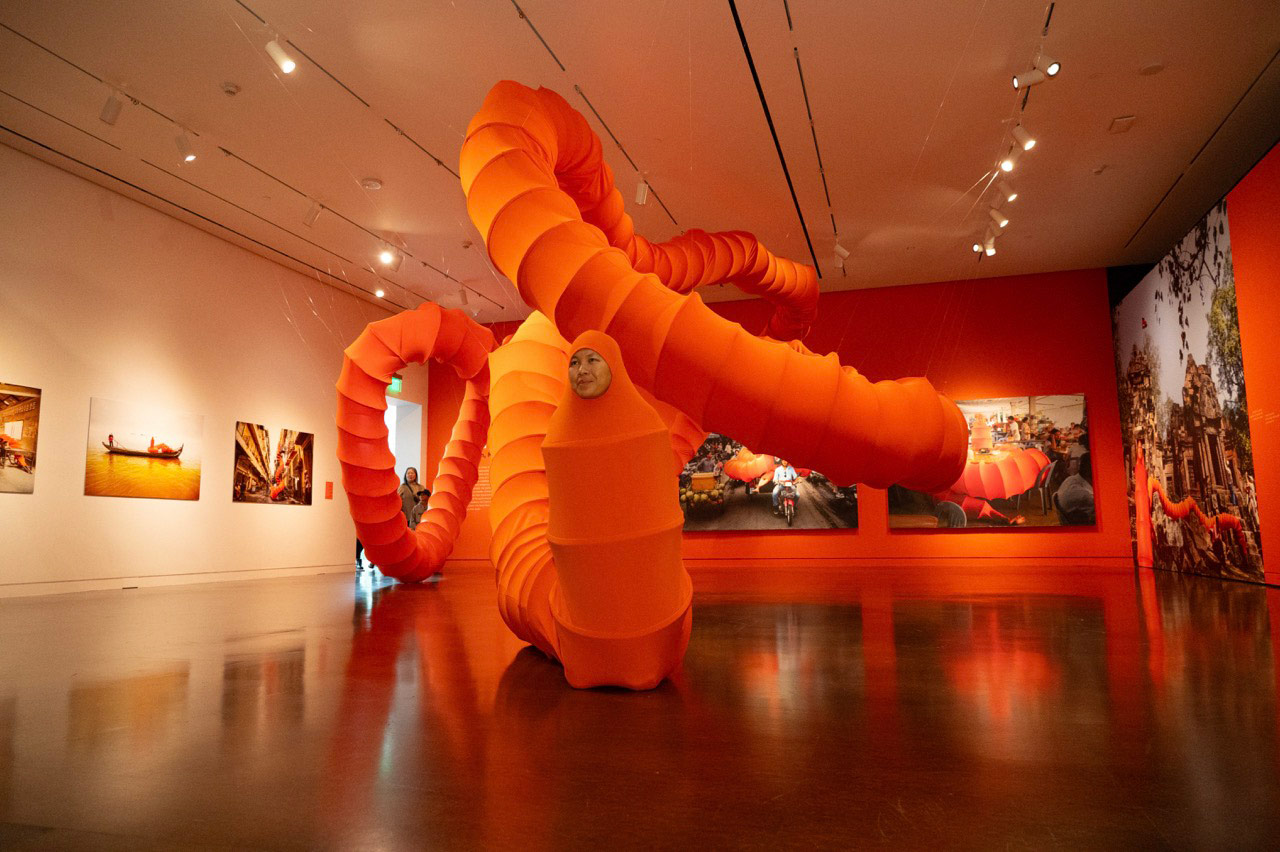
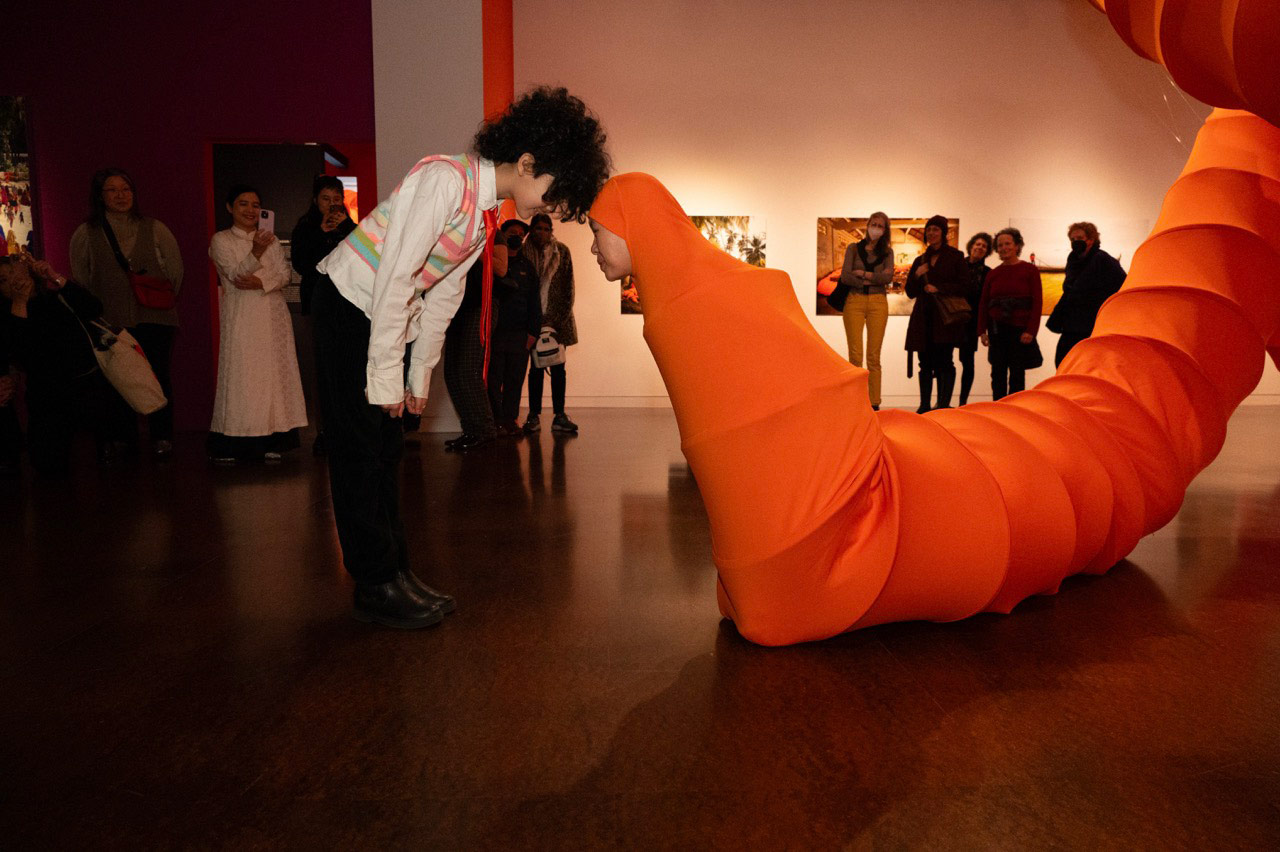
Live performance photos of The Buddhist Bug at Seattle Asian Art Museum, including bottom image, which features Ali’s daughter (Photos by Bruce Tom)
How did you come up with the design of The Buddhist Bug?
Anida Yoeu Ali (Artist): It began as a prototype in 2009, and [the original] costume still exists. But it was created as a coiled structure of wire – not concentric like these. That was a big change that I figured out only when I took it to Cambodia…
When I was awarded the Fulbright Fellowship, which was to study contemporary performance in Cambodia, I sort of lugged this costume with me, not knowing if I was going to do anything with it… I think that by committing to residing in my parents homeland [and] in my birth country, something happened to me to feel inspired and rooted in this place… not just an incredible series of experiences that are not only at the intersection of globalization and rapid urbanization, but also the the renewed energy that people from the diaspora are returning both by force and by choice. We were creating a really interesting art scene.
I lived in Cambodia during that period – about four-and-a-half years of this concentrated critical mass of artists. From filmmakers to performance artists, visual artists, photographers, [and] fashion designers alike, it felt like a real energy of trying to create something really special and profound, without an existing ecosystem to support [i]. We made this ecosystem together… that really uplifted and inspired me to create a prolific amount of work [with] Masahiro [Sugano]… my partner, [who] is a Japanese filmmaker.
I just finally felt good enough about myself, but also inspired enough to then remake the costume with the help of Friends International, which is a major NGO that looks at social entrepreneurship as a way to lift people out of poverty and train younger people or unemployed persons… [Their] sewing team always makes bags, t-shirts, and bracelets, right? I got introduced to them and asked them if they would consider doing this project… and they were totally game.
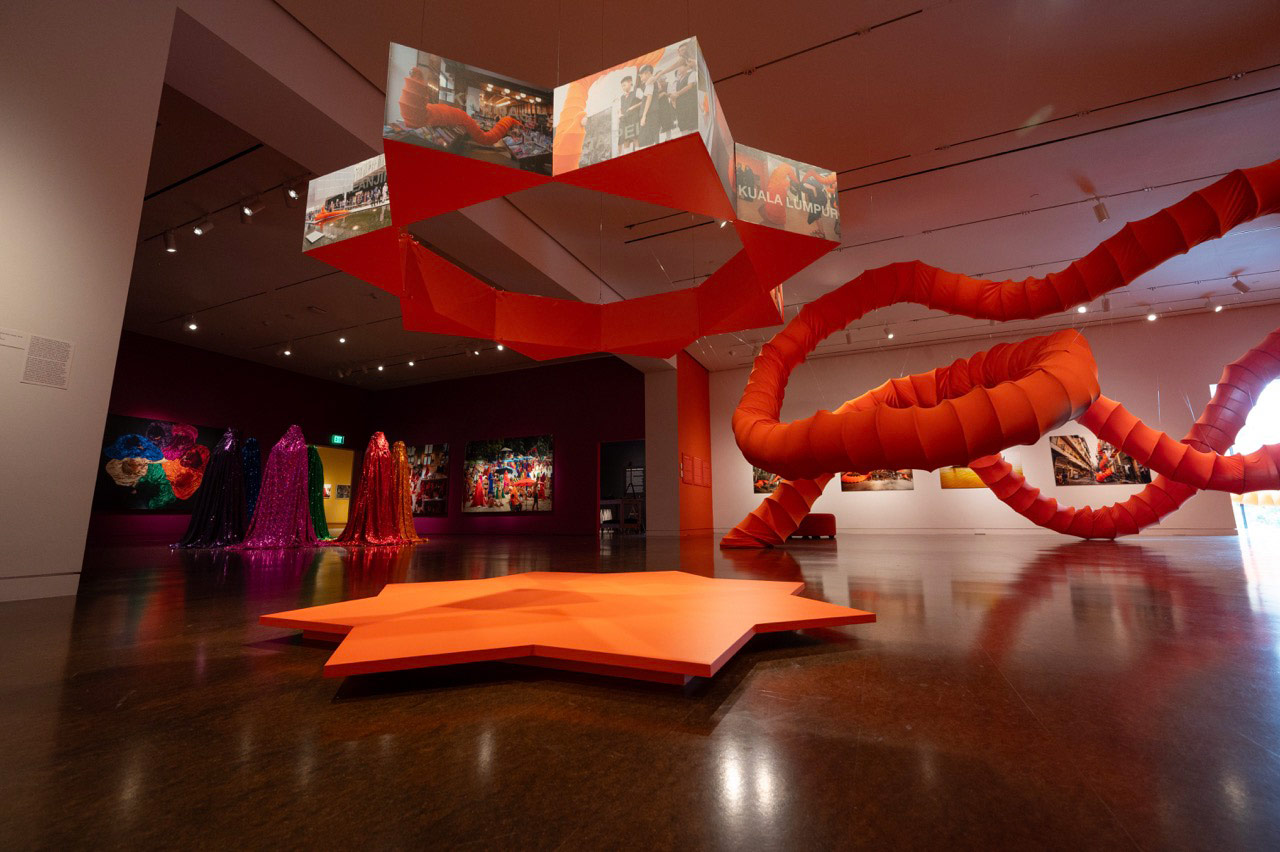
Gallery installation view of Hybrid Skin, Mythical Presence (Photo by Bruce Tom)
How do you choose your material? Do you have specific criteria for selecting fabric?
Anida Yoeu Ali (Artist): When you source fabric in the open air markets of Cambodia, you will never find enough length, because Cambodia gets the things that fall off the trucks that are supposed to go to the Chinese owned garment factories. I have to go into the very sweaty, hot, humid, crammed up textile markets to look for the precise orange that I need. And the fabric has to have a little bit of spandex; it’s very hard to find.
I found enough to make the first segment in 2012, but then when I went to do the commission, I didn’t have that anymore. The fabric market had moved on from that, so I found one that was the color of it but was the wrong thickness, right? I went to Thailand to look for more, and then I went to Vietnam to look for more.
The fabric that you’re seeing is from all those markets where the colors are correct, but the fabric itself changes. The idea is that when you’re looking, you can’t tell the difference – and so, I strategically put certain segments that I know are totally different textures up higher or in [different] room[s]. The whole thing is three or four different fabric textures, but the colors are as close to each other as possible.
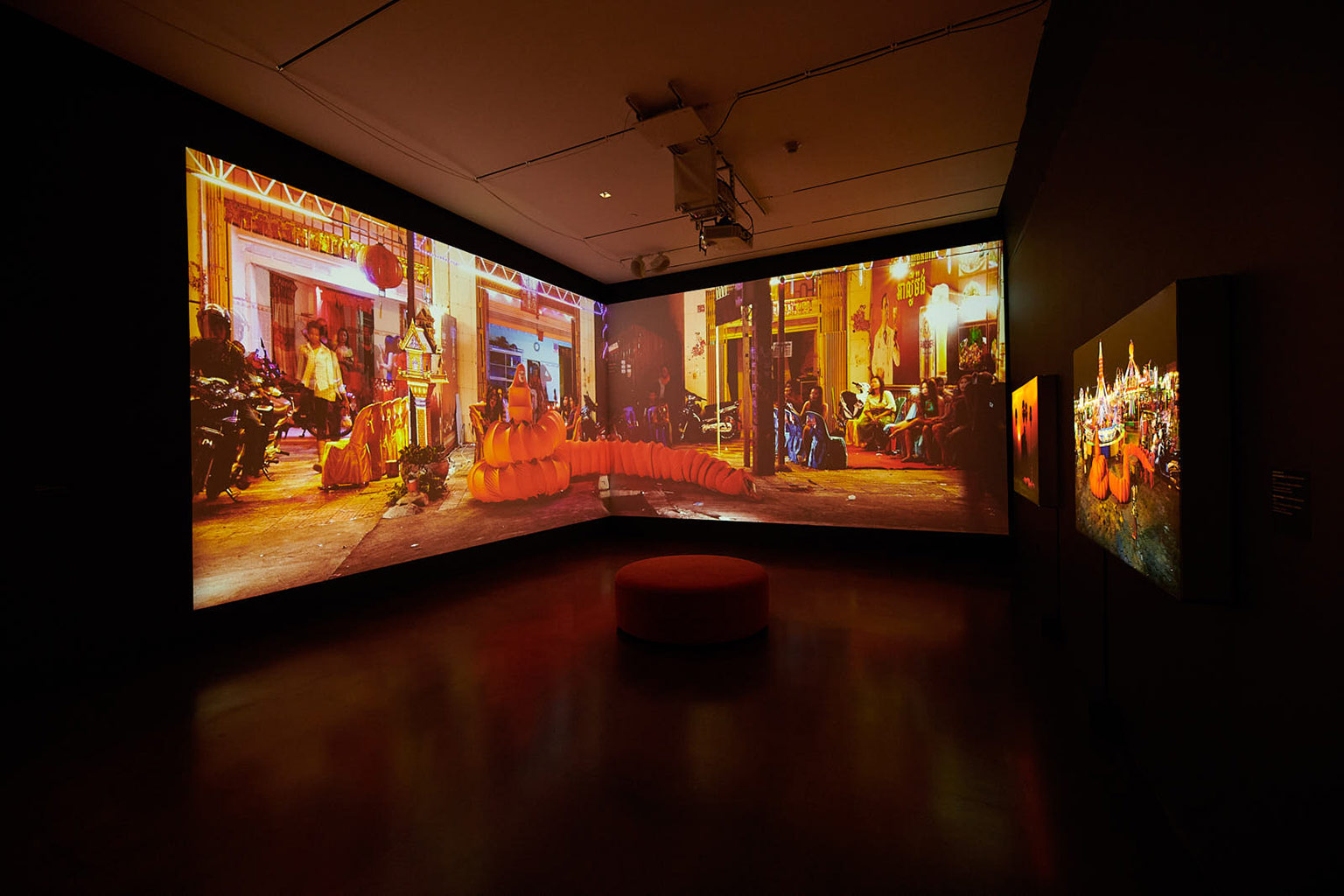
Night series as a part of The Buddhist Bug (Photo by Scott Leen)
What is the genesis of the bug, and how has your relationship to it changed over that long period of time?
Anida Yoeu Ali (Artist): I went back to Cambodia as a young adult. Before getting to Cambodia, I was in Luang Prabang, Laos; I was in Chiang Mai, Thailand; I was in Kuala Lumpur, Malaysia; I was in high Chi Minh City [and] Hanoi, Vietnam. I was getting closer and closer to Cambodia over the course of 2001 until 2003, when I finally – as an adult, maybe 30 years old – arrived in Cambodia as an artist [that was] taking part in this residency project without my family or parents or anything guiding…
Because I grew up Muslim – which is an ethnic minority – I didn’t realize how small of a minority my people are in Cambodia, until I went there to see with my own eyes. Oh my gosh, the Buddhism is ever-present and is constant; you know it’s there…
I was interested in creating a creature that was fusing these two religions: Islam and Buddhism. The whole bug is a creature that is practicing the Islamic code of modest dressing, where you only show a part of your face and legs and hands, which this creature obviously doesn’t have.
The head is modeled after a hijab, because I’m talking about fractured identity, dislocation, and the difficulties of belonging. When you have a bicultural presence, everything is created in segments. The length really makes sense to me in this idea that if you are located in two different points of the world, how can I get those two points to come closer together?
For me, that’s been my struggle my whole life, and that’s why I created this creature. This creature is sort of solving what I call the “diasporic dilemma,” [which is] something I coined because a lot of us living in a diaspora face this dilemma of not quite being an insider to a culture or feeling like always an outsider… not quite American enough or too much American or too Asian, whatever it is. There’s a dichotomy between these identities, and it’s also a combination of thinking about religious identity. Something I’ve always been interested in is, of course, talking about the two things you don’t talk about at the dinner table: religion and politics. It’s my entire body of work here.
The Red Chador
The Red Chador, Ali’s other precious creation, features a shiny full-body gown that she wears to honor and celebrate her Muslim identity. While the character of The Red Chador is silent, it makes its presence known by demanding to be seen through disruption in public spaces. The Red Chador represents an essential element of Ali’s political activism in her art, as she utilizes the gown to combat Islamophobia and homophobia.
This is evident in the interactive performances and protests that Ali channels through The Red Chador, in which she invites passerbyers, strangers, and museum participants to join in. The exhibit features a fantastic gallery display centered around one Washington D.C. action, where The Red Chador protested former President Donald Trump’s Muslim Ban policy. During another exhibit in France, Ali paralleled actions of ISIS and the holding of hostages by humorously holding baguettes hostages and demanding concessions from the audience – lest individual baguettes get beheaded.
Ali’s initial version of The Red Chador disappeared in 2017, as she was traveling through Israel and passing through the Ben Gurion Airport in Tel Aviv in order to reach the West Bank of occupied Palestine. After a period of mourning the death of the original The Red Chador, which now appear in a rainbow spectrum of seven burkas. Their rebirth is just the latest stop in a lengthy journey of The Red Chador‘s birth, life, death, and rebirth – all of which are represented throughout the exhibit.
“The rainbow colors are to align different struggles of people who are standing up against Islamophobia,” Ali explains. “We should also align ourselves with queer issues and people who are fighting homophobia. This is me, forcing my very religious community to address that in all religions.”
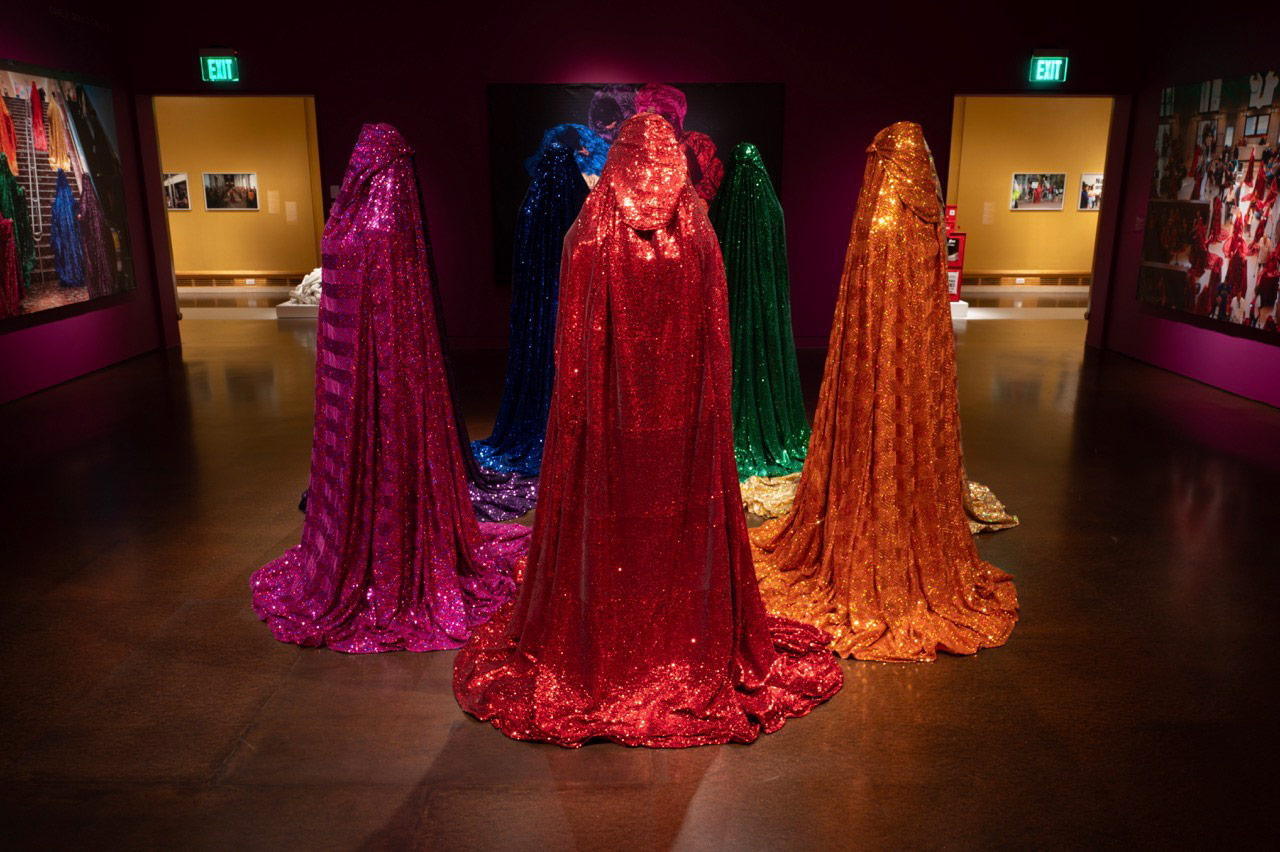
The Red Chador installation view (Photo by Bruce Tom)
Palestine is always an issue and is really an issue right now. How does it feel to have that happening right now, considering the history of The Red Chador?
Anida Yoeu Ali (Artist): How do you transcend these moments of uncertainty? There’s so much in the backdrop of what’s happening right now with Gaza, and Palestine is ever present. It is so hard to celebrate and promote any of this work, when we’re in the middle of horrific things that are happening. This is probably the worst time to have an exhibition of this scale right now. But also, who knew that the geopolitics would go this way?
I do feel that we all have to kind of figure out how we’re going to disrupt this moment with the tools that we have. It doesn’t mean that you have to paint everything red, green, and black to make sure everybody knows… These seven Muslim women that are going to have the courage to do this [Afterlife performance] walk – they hold Palestine with them, and they will hold Palestinians with them on this walk, just like I will. And you will feel that energy. This is not going to be a typical performance. I have never had it where seven Muslim women are so bold enough to do this with me. They are the ones who are going to hold space in a way that also honors, you know, the humanization of the veiled Muslim woman on the streets of Seattle.
Yes, we’re lucky that this is a liberal town, liberal area, liberal region. But at the same time, it’s the same “liberal-ness” that’s also cracking down on student encampments, on student protesters, on youth, on artists who are overtly addressing the situation, so it’s a very difficult time on a lot of fronts.
All I know is that the youth right now are saving us all. From the young people who are surviving this moment in Palestine to the student activists who are reminding us every day what it’s like to put your life, your work, and your studies on the line, just so we don’t forget what’s going on over there.
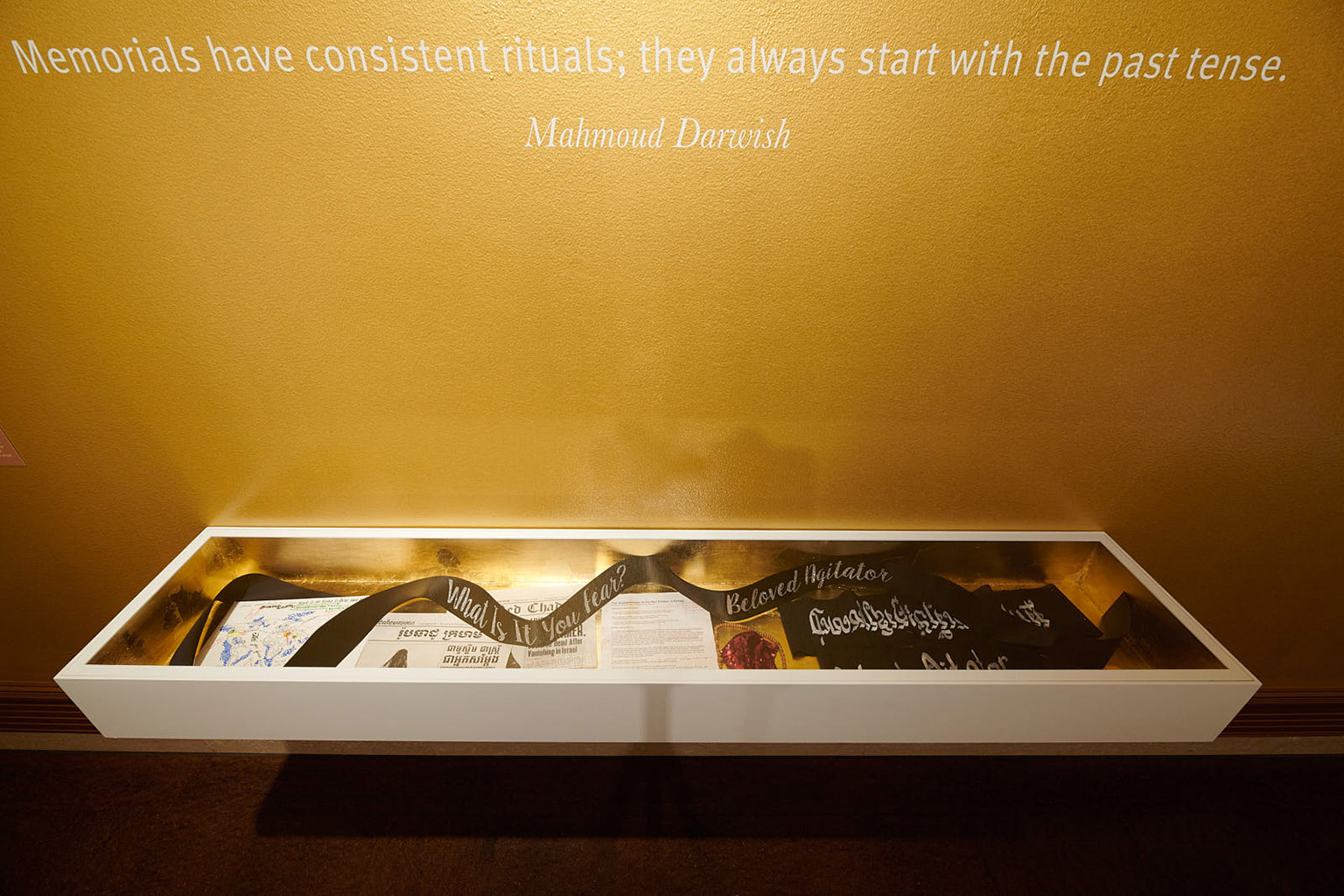

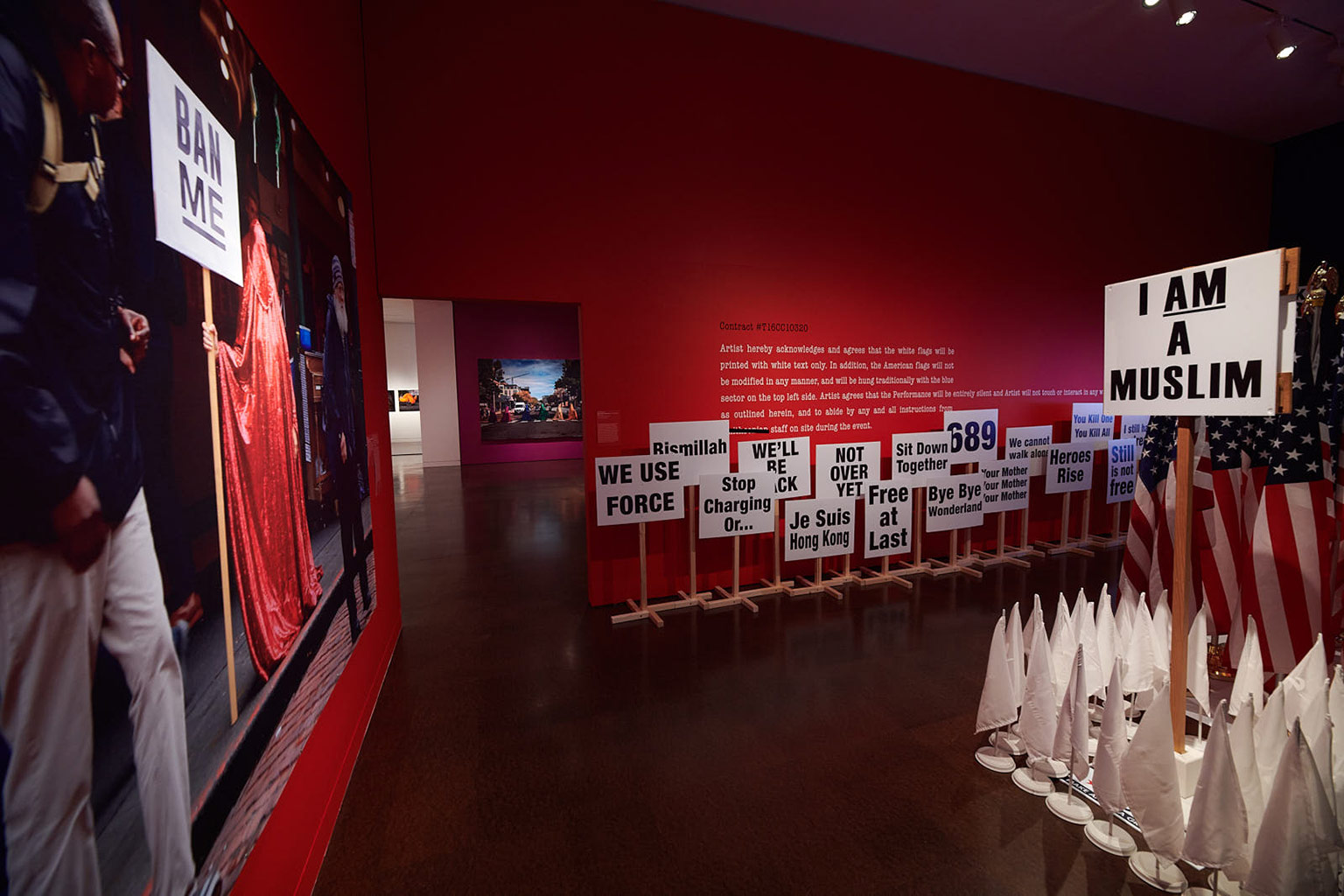
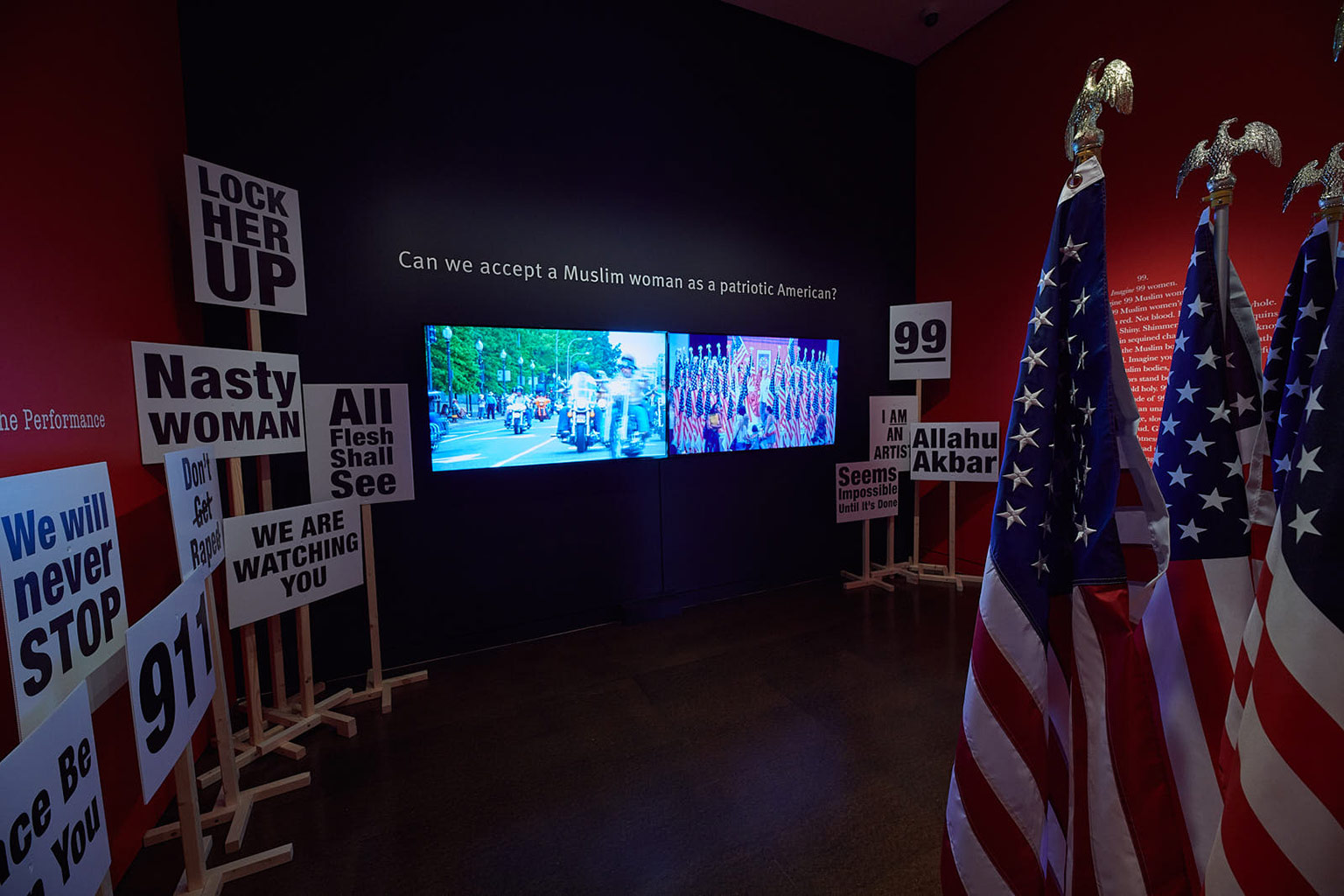
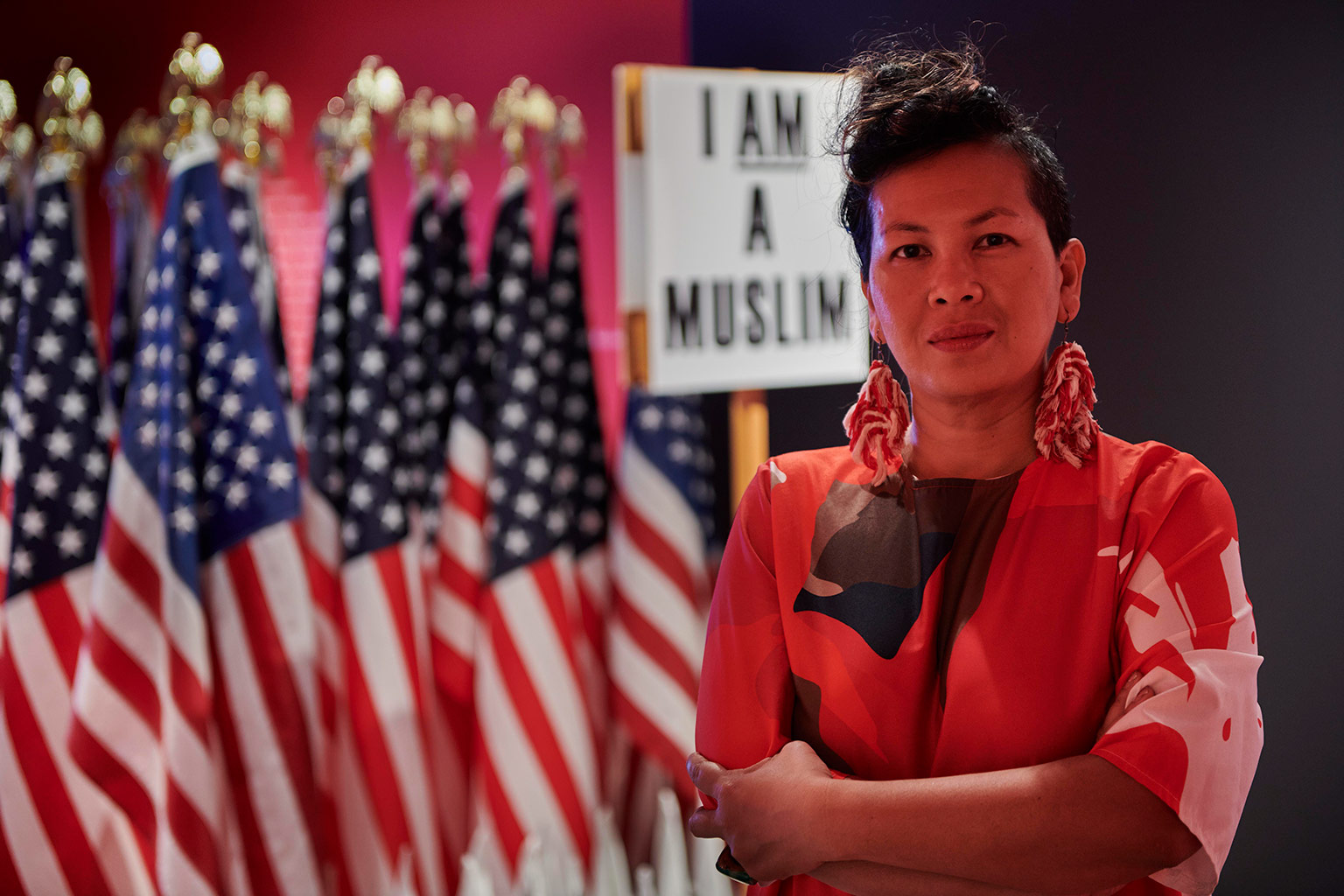
The Red Chador installation (Photos by Scott Leen)
Ω

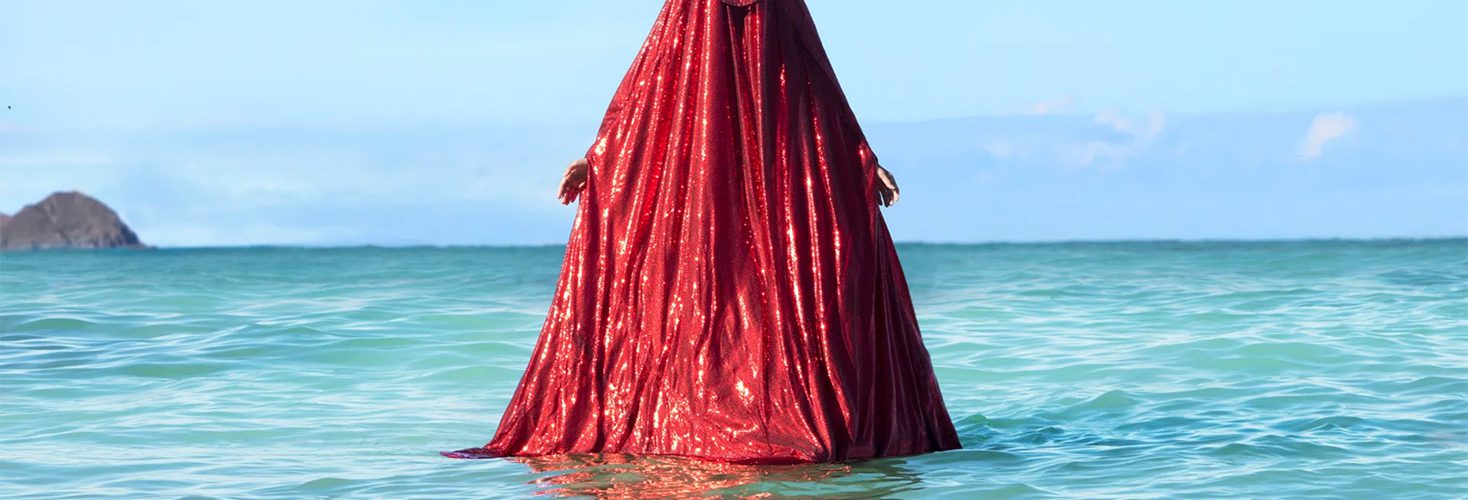
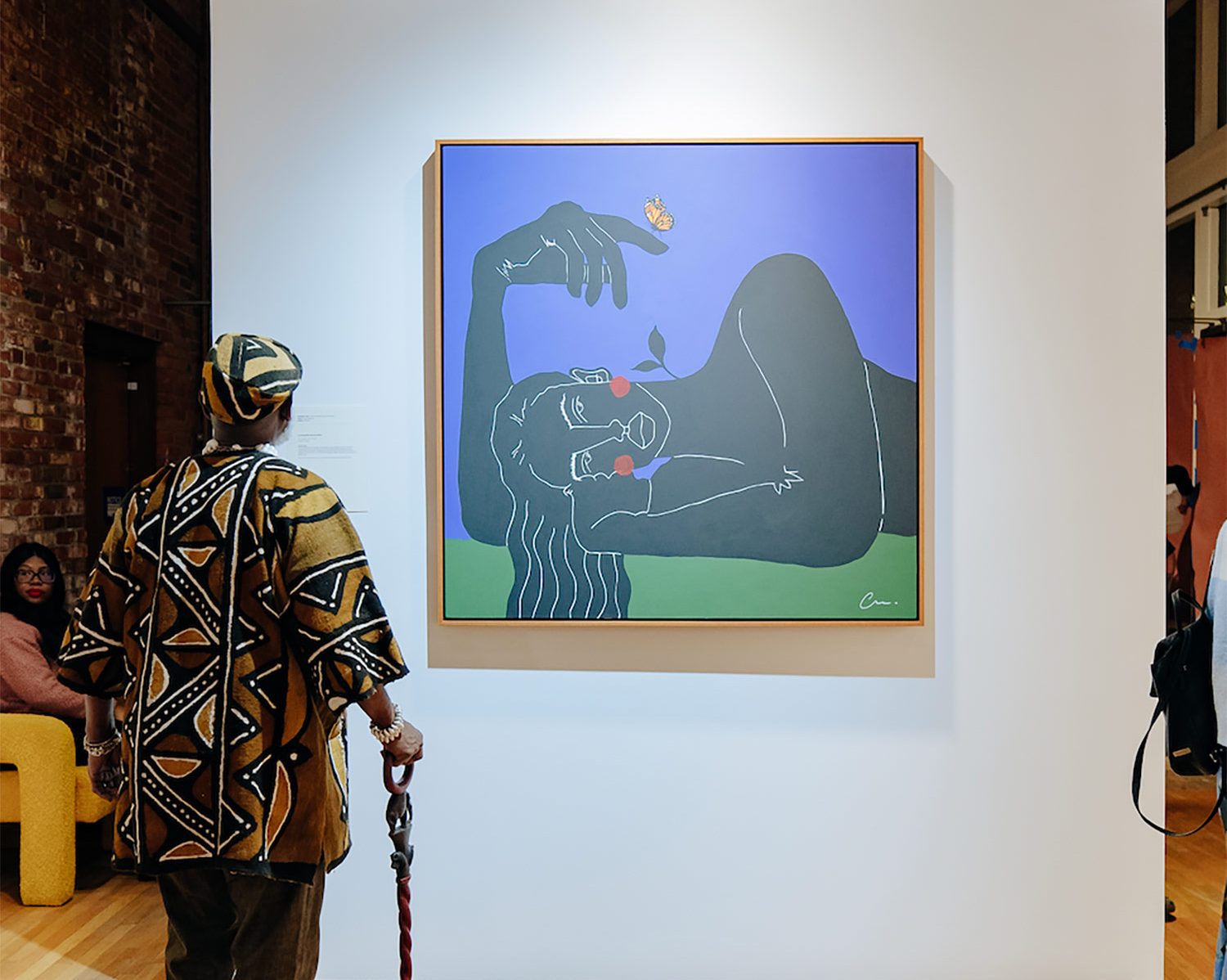


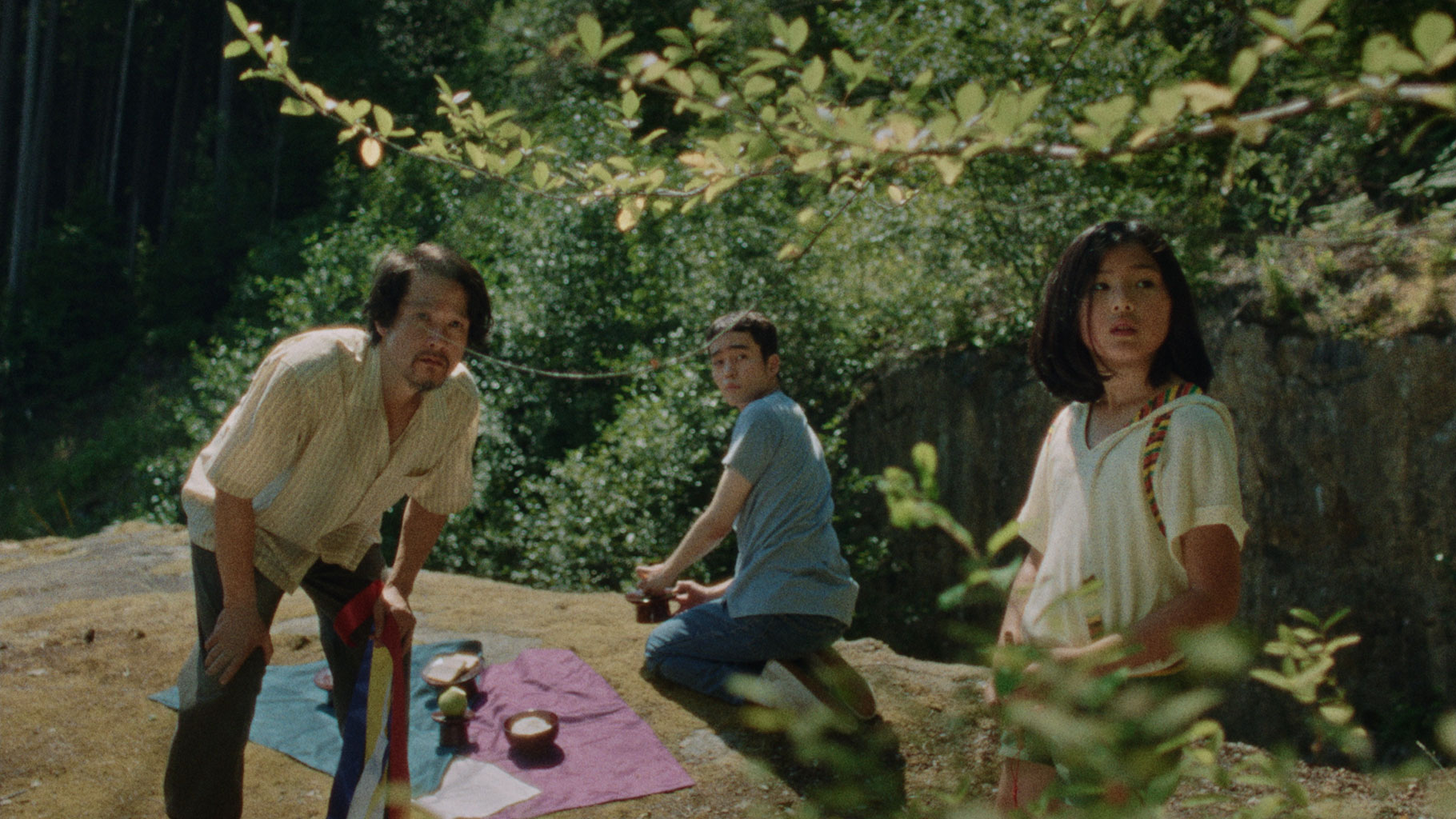
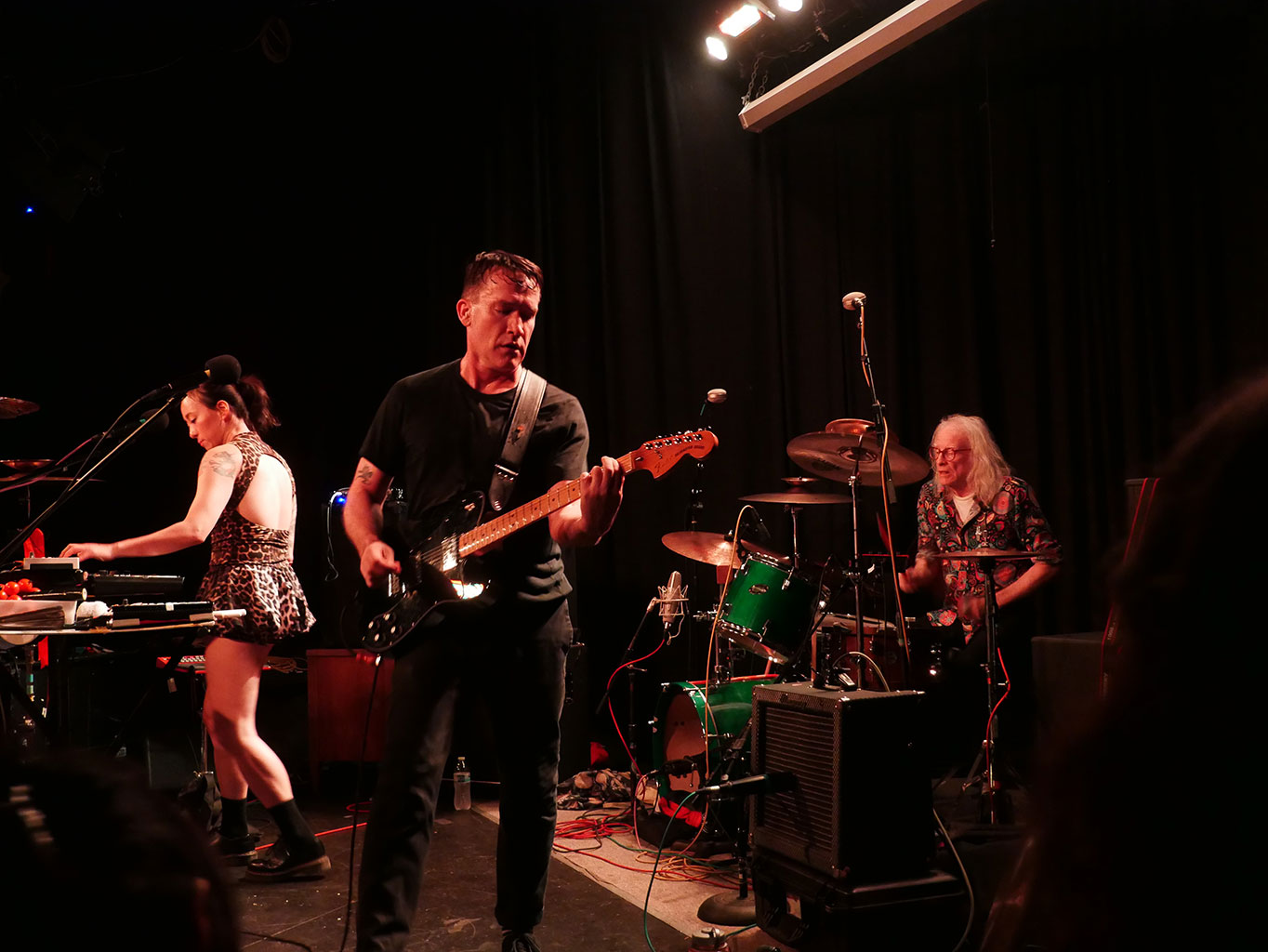
Well written article. It was an honor to read about this artist who has a wealth of talent.